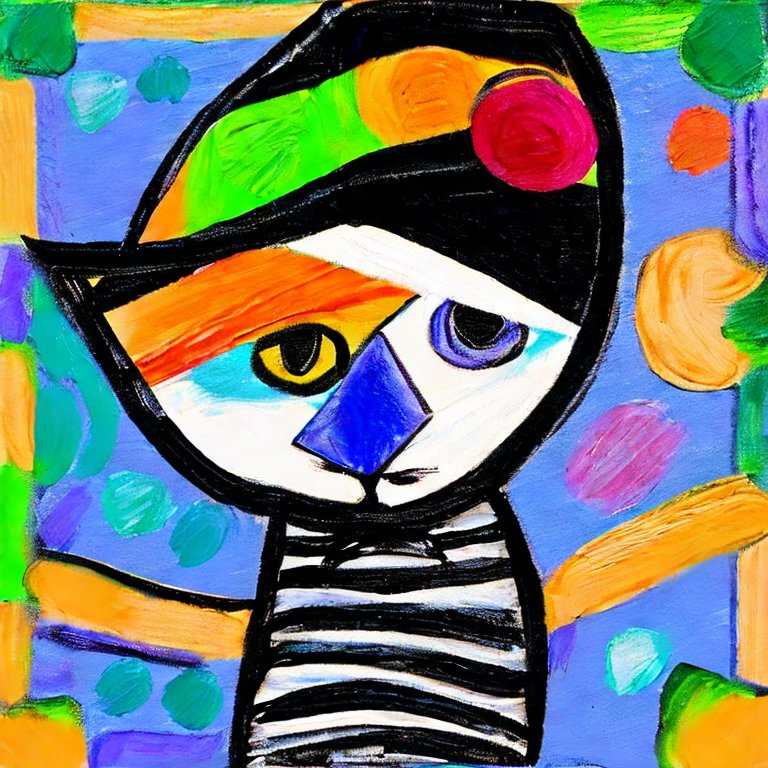This article is also available in German.
Artifical Intelligence (AI) is back in the news. Like every technological trends it has its own news cycle where it seems do disappear from the public mind to then come back full force because a new breakthrough happened.
A few weeks ago my twitter Timeline was full of pictures created by AI websites and applications like Dall-E or Stable Diffusion. The opened up a completely new approach to image creation. You just have to type in some words like „Paint a cat with a hat in the style of Picasso“ and the software would create a single image or sometimes multiple images that presumably fit the description. And it works – more or less. Sometimes the output is garbage, other times it is incredible and mind blowing.

A few days ago people started talking about ChatGPT. This project started in 2018, with the release of the third iteration of this idea, GPT 3, in 2020. The next step was made with the release of ChatGPT in December 2022.
GPT is a project for generating English written text by AI. It doesn’t use predefined text fragments, but the program was pretrained by crawling large databases of texts from the web.
ChatGPT is a chatbot interface to GPT 3. It enables the user to ask questions and to interact with the bot through follow up questions and two way communication. The bot „remembers“ the preceding questions and topic in the conversations and can incorporate that into its own understanding of the users questions and forming of its own answers.
It’s fascinating to play around with this system. Some results can be comically horrendous. This seems to be the case if there is not enough source material for the system to present a reliable answer.
Other times the answers are spot an accurate and enlightening. It can present you definitions and summaries for topics that are really helpful.
I used GPT to summarize the religious developments in the intertestamental period between OT and NT. Another time I used it to define hermeneutics and how it differs from exegesis.
The answers I received were good enough to be used for a lecture without any change.
The system is obviously far from perfect. But it shows the potential in text or image generation by AI. And that opens a can of interesting questions.
I would like to present two different thoughts about what this might mean in the midterm and longterm. I have to begin with a disclaimer: I am not an expert in AI technology. So this thoughts are obviously to taken with a grain of salt.
AI and the future of research
AI can open up completely different ways of research. I thought about this in the context of Bible study software. This could indeed be a completely new approach in digital dictionary usage. I have a collection of academic Dictionaries in my Accordance Collection. If I want to get a broad picture about a topic like „second temple“ I have to put in search requests spanning all of those books, hoping I will find all the information I need.
I then have to go through all of the results and gather all the relevant information book by book.

A completely different approach would be to include something like chatGPT directly into Accordance or Logos as a form of research assistant. I then wouldn’t buy all the different dictionaries, but access to the AI Database as subscription. This Database is vetted by the provider to include reliable information. Then I would ask the bot questions about topics and would follow up on the results presented to me to dig deeper where necessary. If I need to cite articles or books for an academic paper the Bot would point me to recommended books or articles that e.g. were used to create the content of the database.
And because it’s not just a simple search query but a real AI Bot, I could have real interaction with the AI, developing ideas through the chat and checking those ideas against the available database. That could help you to bulletproof your ideas before you go public with them.
Christoph Heilig published a Twitter Thread about a „conversation“ with ChatGPT on the narrative structure of Romans and Galatians with some fascinating results.
We are just starting with this kind of interaction and it is already incredible. Future iterations only will get better and open up completely new paths of research.
AI and the future of learning
Robert Lepenies, University President and Professor at the Karlshochschule, published another Twitter Thread about how AI might affect and influence the future of learning and studying at universities.
If students will use AI to write homework and papers that are indistinguishable from something a human wrote, then this will create completely new challenges for education. What would be the purpose of homework that every student does through AI bots? And because all of those papers will be created on the fly and are not already published texts you will not find them through plagiarism software that is currently used.
That would require completely new approaches to how education functions and how you measure success in learning.
This future isn’t there yet, but it’s not far away as well. And educational institutions will have to adapt to these changes, because history shows that their students will among the first to discover the potential of new technology.